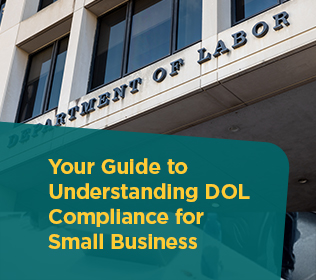
When it comes to understanding part-time vs. full-time employment, there are core differences that employers and everyone should know. Part-time employment consists of employees who work a shorter amount of time during a workweek. Generally, part-time employees tend to work 4 hours a day for 5 days a week. A Full-time employee is considered by the IRS’s definition, “For purposes of the employer shared responsibility provisions, a full-time employee is for a calendar month, an employee employed on average at least 30 hours per week or 130 hours of service per month.” It’s important to understand these definitions when you are considering offering choices to your employees on their work schedules. Yet, the differences between the two types of employees reside in recognizing the nuances of what determines a part-time employee/employment.
What Does Part-Time Employment Mean for you as Business Owner?
As mentioned, the definition of part-time employment is complex. Even the U.S. Department of Labor (DOL) addresses the fact that the “The Fair Labor Standards Act (FLSA) does not address part-time employment.” But generally, a part-time employee can surprisingly work up to 40 hours a week without benefits. And that piece is important for you to know as an employer. If an employee works up to 40 hours per week, they do not necessarily need to be offered benefits. When part-time employees work more than their scheduled hours, their employer will have to pay them overtime wages. There isn’t any defined or definitive standard, nor is there any set standard laid out federally. Thus, it’s essentially up to the employers to determine how many hours a part-time employee will work without benefits.
Additionally, there aren’t any minimum or maximum hours a part-time employee can work either.
Essentially, it ranges from 5-35 hours a week. Once again, there isn’t a federal guideline that outlines how many hours a part-time employee must work. The hourly work schedule is determined between the employer and the employee.
Do Part-Time Employees Qualify for Employee Benefits?
Let’s talk a little further about employee benefits for part-time employees. Part-time employees can qualify for employee benefits, but it depends on the laws of the local and state level. In addition, some federal laws make offering benefits for part-time employees a requirement. This SHRM (Society for Human Resource Management) article expands on this in more detail; “Some laws require employers to offer certain benefits to part-time employees. State and local laws vary and may require that benefits such as paid sick leave, short-term disability, or health insurance plans be offered to part-time employees…. Some federal laws also require that benefits be offered to part-time employees…” Employers need to conduct their due diligence and understand the laws on the local, state, and federal levels to ensure compliance.
What is Full-Time Employment?
We know that full-time employment tends to imply a set work week, usually an 8-hour day, 40-hour week. As with part-time employment, there isn’t a set definition of what full-time employment means, as it tends to leave that up to individual employers. Yet, the minimum number of hours is 32 hours a week, with a maximum of 40 hours a week. Full-time employees are offered various employee benefits as part of their employment agreements. For example, they may receive Personal Time Off (PTO), health, vision, dental, and 401k retirement plans. The benefits of hiring a part-time employee vs. a full-time employee are up to the employer, but we’ve explored some of the pros and cons below.
The Advantages and Disadvantages of Hiring Part-Time Workers vs. Full-Time Employees
An employer needs to decide whether hiring part-time workers or full-time employees will work best for their business. There are pros and cons for both. For example, the benefits of hiring part-time workers are:
More Flexibility:
- Employers can decide when to ramp up their staff, especially businesses that go through the increased activity throughout different quarters or seasons of the year.
Cost-Effective:
- Part-time employees do offer the employer a chance to save on employee benefits costs. When hiring a full-time employee must provide employee benefits that increase costs for the employer.
More Talent:
- When hiring or considering hiring part-time employees, there tends to be a wider pool of available talent. They may not be as qualified or as experienced as full-time employees but they’re more accessible and affordable.
Regarding potential disadvantages, it’s important to note some of the following:
Not as Invested:
- Part-time employees won’t be as invested in the success or long-term future of your company. There isn’t the same sense of loyalty with full-time workers as they don’t receive the same benefits. The deep connection isn’t there as it is with full-time employees.
Not as Consistent:
- Employers can potentially expect the type of work provided by part-time employees isn’t as consistent as full-time workers. There isn’t a sense of obligation that there is with full-time employees.
As it’s easy to distinguish after analyzing the pros and cons of hiring part-time employees, we can determine that some of the advantages of hiring Full-Time employees are:
Increased Loyalty:
- Full-time employees generally are more loyal than part-time employees. They tend to receive health care employee benefits, as well as voluntary benefits so their employment provides a sense of obligation.
Money:
- Though employers will have to pay more initially, the long-term financial gains tend to pay for themselves. Full-time employees stay longer and work harder. They’re motivated and driven to help the company succeed.
Productivity:
- Due to their loyalty and the incentives provided to them, full-time employees tend to work harder and have higher rates of productivity than part-time employees. They strive to deliver a quality of work that meets or exceeds the standards set forth by their employer.
There are many differences between part-time and full-time employees. We hope we’ve been able to detail those distinctions to provide further clarity. If you’re interested in learning more about the differences between these two types of employment, you can always reach out to us at info@prestigepeo.com. Additionally, we encourage you to explore more of our thought leadership on our page, The Prestige Perspective. You’ll find content that speaks to the most relevant topics in #HR today!




